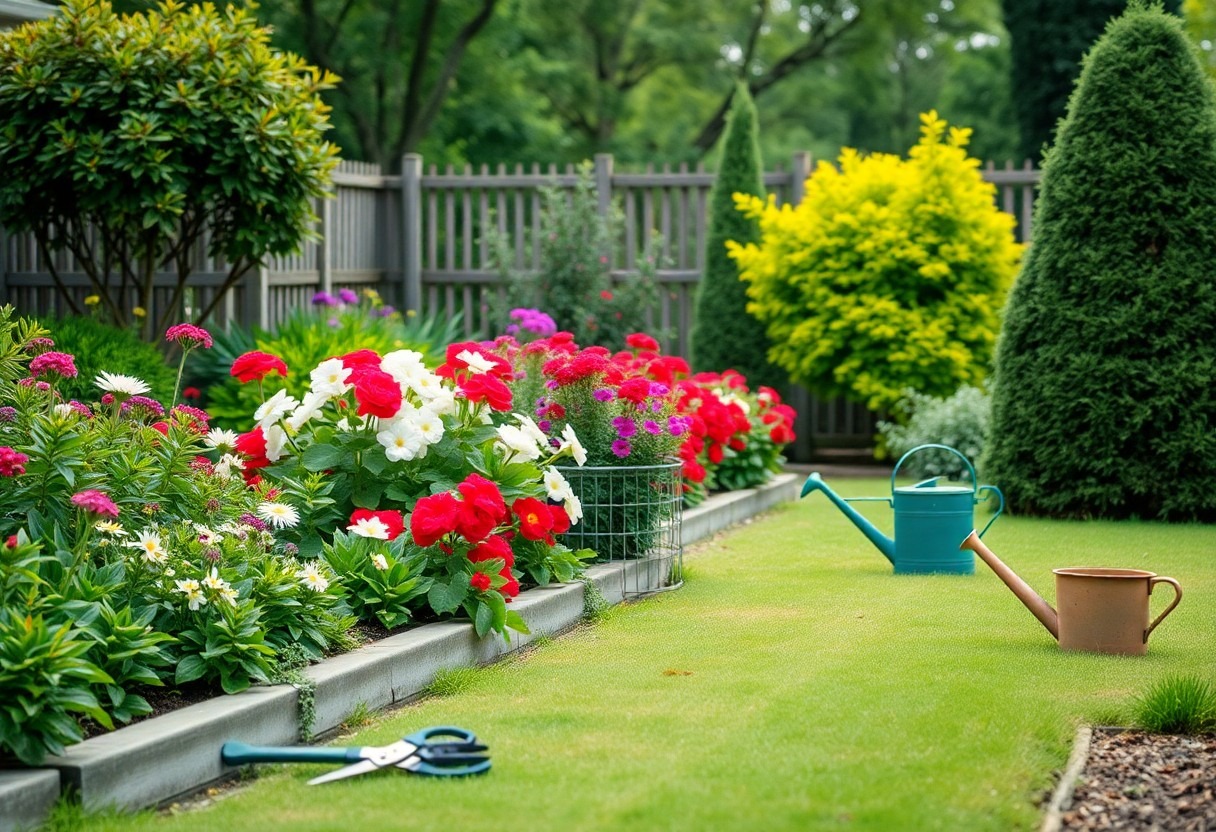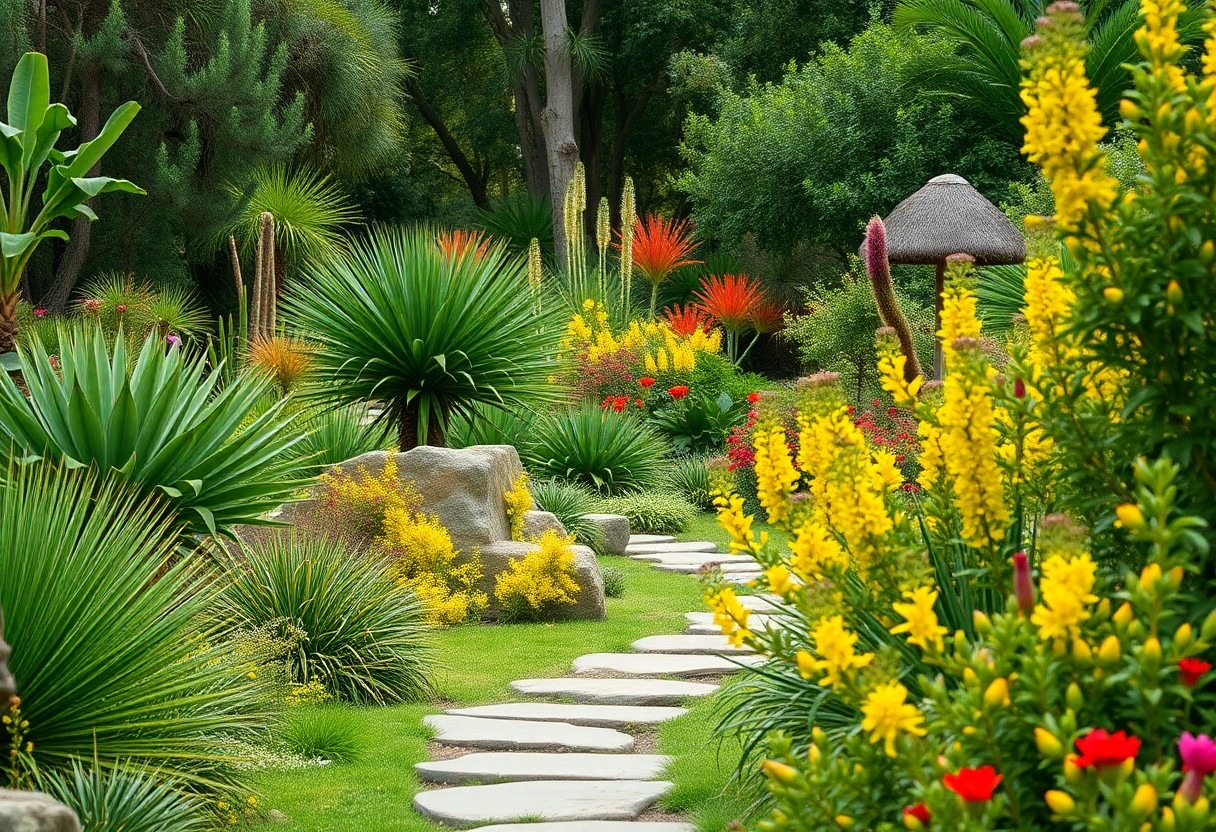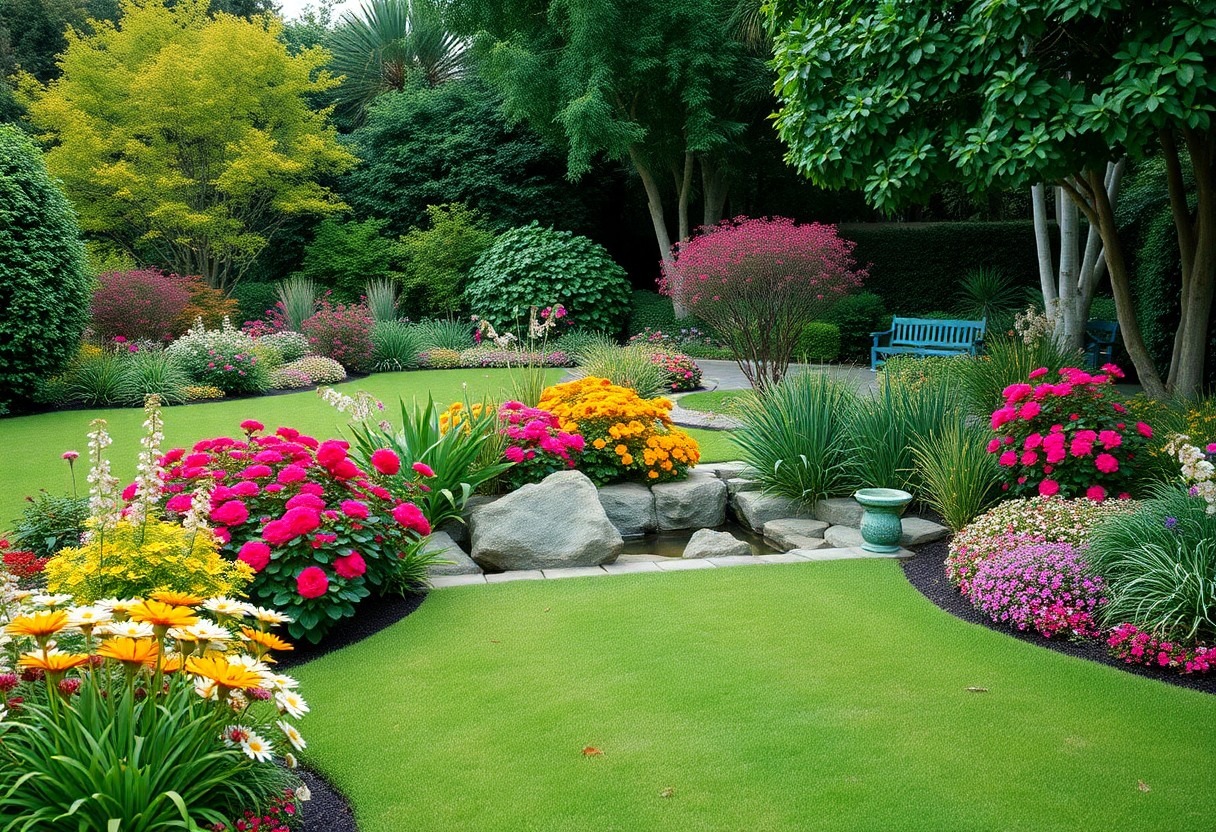This comprehensive guide is designed to help you navigate the vitals of landscape maintenance in Helensvale, ensuring your garden thrives throughout the seasons. You’ll discover practical tips for plant selection, optimal watering techniques, and effective pest control strategies to create a resilient and beautiful outdoor space. With a little care and attention, you can transform your garden into a vibrant sanctuary that enhances your home and contributes positively to the local ecosystem. Let’s commence on this journey towards a more flourishing garden together!
Types of Landscape Maintenance
While landscape maintenance may seem overwhelming, understanding the different types helps in managing your garden effectively. Here’s a breakdown of important maintenance tasks you should consider:
| Soil Care | Ensure nutrient-rich soil for optimal plant growth. |
| Lawn Care | Regular mowing, watering, and fertilizing for a thriving lawn. |
| Plant Maintenance | Pruning, deadheading, and replacing plants as needed. |
| Weed Control | Keep unwanted vegetation at bay through consistent removal. |
| Mulching | Retain moisture and suppress weeds around plants. |
Knowing which maintenance types to focus on will help ensure your garden stays healthy and vibrant.
Regular Maintenance
Now, establishing a routine for regular maintenance is important for the health of your garden. This includes weekly lawn mowing, watering, and checking for pests or diseases. Consistent care will not only keep your landscape looking its best but also prevent larger issues from developing over time.
Seasonal Adjustments
Now, seasonal adjustments play a significant role in maintaining your landscape. As the weather changes, so should your landscaping strategies. Different seasons call for specific tasks, and adjusting your care routine will ensure your garden thrives throughout the year.
Types of seasonal adjustments can include changing your watering schedule during dry spells, applying fertilizer in spring and fall for optimum growth, and protecting plants during winter frosts. You should also plan for seasonal plant swaps, introducing new flowers and shrubs that flourish in particular climates. Failing to adapt your maintenance to seasonal changes could lead to weakened plants that struggle to survive. Prioritizing these adjustments will enhance your garden’s health and appearance.
Effective Tips for Thriving Gardens
Any gardener can enhance their garden with the right techniques. To help you achieve a flourishing garden, consider the following tips:
- Invest in quality soil and amendments
- Prioritize drainage to prevent waterlogging
- Use mulch to retain moisture and suppress weeds
- Choose drought-resistant plants when possible
- Rotate your crops to maintain nutrient balance
The right practices will lead to a thriving garden ecosystem.
Watering Techniques
On a warm day, proper watering techniques are crucial for the health of your garden. Ensure you’re watering early in the morning or late in the afternoon to reduce evaporation. Use deep watering methods to encourage deep root growth, setting your schedule to let the soil absorb moisture adequately. A good rule of thumb is to provide at least 1 inch of water each week, whether through rainfall or irrigation.
Soil Health Management
Health is fundamental when it comes to maintaining a productive garden. Regularly testing your soil will help you understand its nutrient levels and pH balance, allowing you to amend it as needed. Incorporating compost regularly will enhance the microbial activity, providing crucial nutrients to your plants. Additionally, organic matter improves soil structure and boosts its water-holding capacity.
Watering is not just about quantity, but also about quality. Ensure that your watering methods focus on getting moisture deep into the soil, promoting strong root systems. Too much water can lead to root rot and other fungal diseases, while not enough can cause plants to stress and wilt. Regularly assessing your soil’s moisture levels can provide insights into its health. You should aim to maintain a balance of moisture, while taking care to avoid saturated conditions, as they pose a risk to your plants’ well-being.
Step-by-Step Guide to Landscape Care
Now that you are ready to begin your landscape maintenance journey, follow this simple step-by-step guide to keep your garden thriving:
| Task | Frequency |
|---|---|
| Soil Testing | Annually |
| Fertilization | Every 4-6 weeks |
| Weeding | As needed |
| Watering | 2-3 times a week |
| Pruning | Seasonally |
Planning Your Garden Layout
One of the first steps in successful landscape maintenance is planning your garden layout. Take the time to sketch a design that considers sunlight, shade, and the growth habits of various plants. Identify zones for flowers, vegetables, and paths, ensuring each area has adequate space to thrive while maintaining easy access for maintenance tasks.
Essential Tools and Their Uses
Essential tools are the backbone of effective landscape maintenance. Equipping yourself with the right instruments makes tasks easier and more efficient. Common tools you should have include a spade for digging, a rake for leveling soil, pruning shears for trimming plants, and a hose or watering can to keep your garden hydrated.
Landscape maintenance becomes significantly easier with the right tools. A sharp spade helps you dig and transplant healthy plants, while a sturdy rake quickly gathers leaves and levels soil without straining your back. Invest in quality pruning shears for clean cuts, promoting healthy growth and reducing the risk of disease. Lastly, use a hose with an adjustable nozzle or a watering can to help you direct water efficiently and avoid overwatering, which can harm your plants.
Key Factors Influencing Landscape Success
Your landscape’s success hinges on several key factors including climate, soil quality, and plant selection. These fundamental elements work together to ensure a thriving garden. Regular maintenance and attention to seasonal changes are also crucial for sustaining your landscape over time. Here’s what you should focus on:
- Climate – Understand local conditions.
- Soil quality – Test and amend for optimal growth.
- Plant selection – Choose species suited to your environment.
- Maintenance – Implement a regular care schedule.
The right balance of these factors will promote landscape vitality.
Climate Considerations
For optimal growth, it’s crucial to consider the climate in Helensvale. Understanding the local weather patterns, including rainfall, temperature ranges, and seasonal variations, will aid you in selecting appropriate plants and planning effective maintenance routines. Be mindful of the climatic changes throughout the year as they directly influence your garden’s health.
Plant Selection
Success in landscaping largely depends on your plant selection. When you choose the right plants that thrive in local conditions, you enhance your garden’s resilience and beauty. Opt for varieties that are drought-resistant or suited to your garden’s sunlight exposure to ensure they flourish.
Landscape success centers around selecting the right plants tailored to your specific conditions. Consider factors like growth habits, soil requirements, and pest resistance when choosing your flora. Native plants often provide benefits such as lower maintenance and greater adaptability, ensuring a flourishing garden that harmonizes with the local ecosystem. Additionally, incorporating a variety of species can help in creating a more visually appealing and sustainable landscape, ultimately enhancing your enjoyment of your outdoor space.
Pros and Cons of Various Maintenance Methods
All landscape maintenance methods come with their own set of advantages and disadvantages. Understanding these can help you make informed choices that suit your garden’s needs. The following table breaks down the pros and cons of various methods:
| Maintenance Method | Pros | Cons |
|---|---|---|
| Organic Practices | Environmentally friendly | Slower results |
| Chemical Treatments | Quick and effective | Potential harm to wildlife |
| Diy Maintenance | Cost-effective | Time-consuming |
| Professional Services | Expert care | Higher costs |
For a comprehensive understanding of effective gardening, check out Thriving Gardens: A Beginner’s Guide to Vegetable ….
Organic vs. Chemical Practices
The debate between organic and chemical practices remains prominent in landscape maintenance. Organic methods prioritize natural solutions, promoting soil health and environmental sustainability. However, they often require patience for visible results. On the other hand, chemical approaches provide quick fixes but may introduce harmful substances into your garden ecosystem.
Professional Help vs. DIY
If you seek to maintain your landscape, you might consider whether to hire professionals or take the DIY route. Each choice has its own set of benefits and challenges, affecting your overall gardening experience.
Various factors influence your decision between professional help and DIY maintenance. Engaging professionals offers you the experience and expertise necessary for thriving landscapes, especially if you face challenging issues like pest infestations or irrigation problems. However, it can be more expensive. Conversely, taking a DIY approach allows you to manage costs but may require significant time investment, trial and error, and risk of potential mistakes. Ultimately, evaluate your garden’s specific needs and your expertise to find the right balance.
Common Mistakes to Avoid
Despite your best intentions, landscape maintenance can come with a steep learning curve. Many beginners make common mistakes that can hinder the health and aesthetics of your garden. By being aware of these missteps, you can cultivate a vibrant outdoor space that flourishes year-round. Avoid oversights and cultivate a successful landscape by steering clear of these pitfalls.
Overwatering and Underwatering
While you may think a green thumb means providing abundant water to your plants, overwatering can be just as harmful as underwatering. It’s important to assess the specific needs of your plants to avoid soggy roots or parched foliage. Finding a balance will help your garden thrive.
Ignoring Pest Control
If you’re not vigilant about pest management, you might wake up to an unexpectedly damaged garden.
Common pests can wreak havoc on your landscape if left unchecked. From aphids to whiteflies, these insects not only damage your plants but can also attract diseases that may threaten the entire garden. Regularly inspecting your plants for signs of pests and implementing natural or chemical treatments is vital. By being proactive in your pest control efforts, you’ll contribute to the overall health and beauty of your garden.
To wrap up
So, by following this beginner’s guide to landscape maintenance in Helensvale, you’re well on your way to creating and sustaining a thriving garden. From understanding your soil to choosing the right plants and establishing a proper watering routine, each step is important for enhancing your outdoor space. Consistently tending to your garden will not only help it flourish but also provide you with a peaceful retreat right at home. Embrace these tips, and you’ll enjoy a vibrant landscape that reflects your hard work and dedication. Happy gardening!



